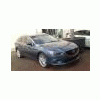-
Contenuti simili
-
Addio Alitalia, benvenuta ITA Airways 1 2 3
Pubblicato da J-Gian,
- 28 risposte
- 8711 visite
-
- 6 risposte
- 2371 visite
-
Boeing 797 - Rumors sul prossimo "mid-size airplane" di Boeing 1 2
Pubblicato da ISO-8707,
- 10 risposte
- 3410 visite
-
-
-

















.thumb.jpg.46228d717c405acd43b45b79fddce6a4.jpg)

Messaggi Raccomandati:
Crea un account o accedi per lasciare un commento
Devi essere iscritto per commentare e visualizzare le sezioni protette!
Crea un account
Iscriviti nella nostra community. È facile!
Registra un nuovo accountAccedi
Sei già registrato? Accedi qui.
Accedi Ora